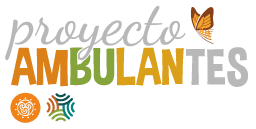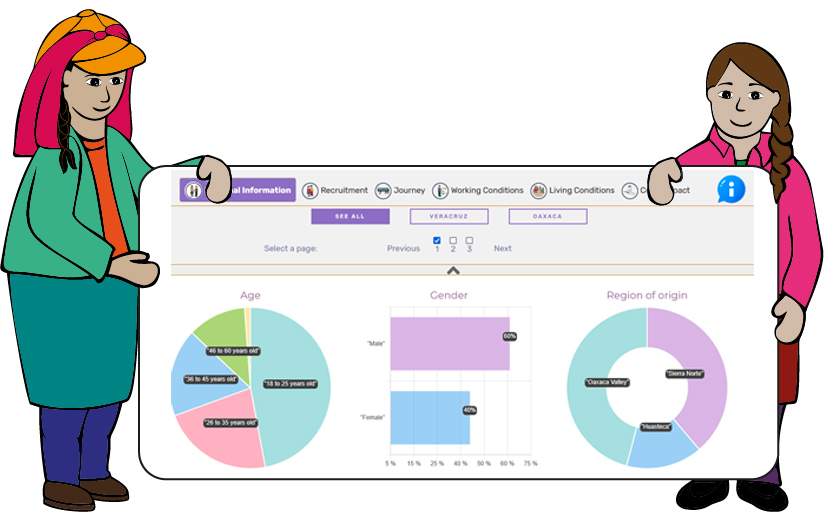Interviews
About the Worker Interviews
Our map of “origins and destinations” and this interactive dashboard will become reference tools for foundations, organizations, academics, and internal agricultural migrants themselves. These actors will be able to access up to date information on migratory routes, living and labor conditions, as well as the impact of COVID-19 on migrants’ personal experiences. However, it’s important to mention the vastness of this subject and the relative size of the data sample gathered.
The results captured in this tool come from interviews with 85 people in their states of origin, carried out between April and August of 2022. The interviews were conducted with inclusion and equity at the forefront, seeking to reflect a diverse range of voices.
These interviews were carried out in the Valles Centrales in Oaxaca, and the Sierra Norte and the Huasteca in Veracruz.
The interviews were conducted thanks to the vital work of de Caminos Centro de Acompañamiento a Migrantes, AC, and Fomento Cultural y Educativo, AC, and with the support of IREX and Centro de Estudios en Cooperación Internacional y Gestión Pública, AC.
It is important to acknowledge that the results and scope of this endeavor only offer a glimpse into the complex reality of internal agricultural migration in Mexico. We hope that these results can provide an improved and informed idea of how this vulnerable population lives, travels, and works. In government discourse, agricultural migrant workers are often referred to as “essential,” but in their daily lives they face inequality, exclusion, discrimination, exploitation, various types of violence, and poverty.
Dashboard
An interactive dashboard where you can navigate and analyze the results of the Ambulantes Project.

